
January 18, 2024
Double Diamond Product Design Process
Creating a successful digital product means following a rigorous process that prioritizes user needs and business goals. That’s why we rely on the Double Diamond Product Design Process, a proven model that guides us from discovering the problem to delivering a final product.
And today we will tell you everything we know about it! So buckle up and let's get started.mobile trading platform
Understanding the Double Diamond Model
The Double Diamond model is a product design process that emphasizes an iterative and human-centered approach. The process is broken down into four phases, each of which focuses on a different aspect of the product development process. From our experience, following the DD model rigorously results in products that meet user needs and drive business growth.
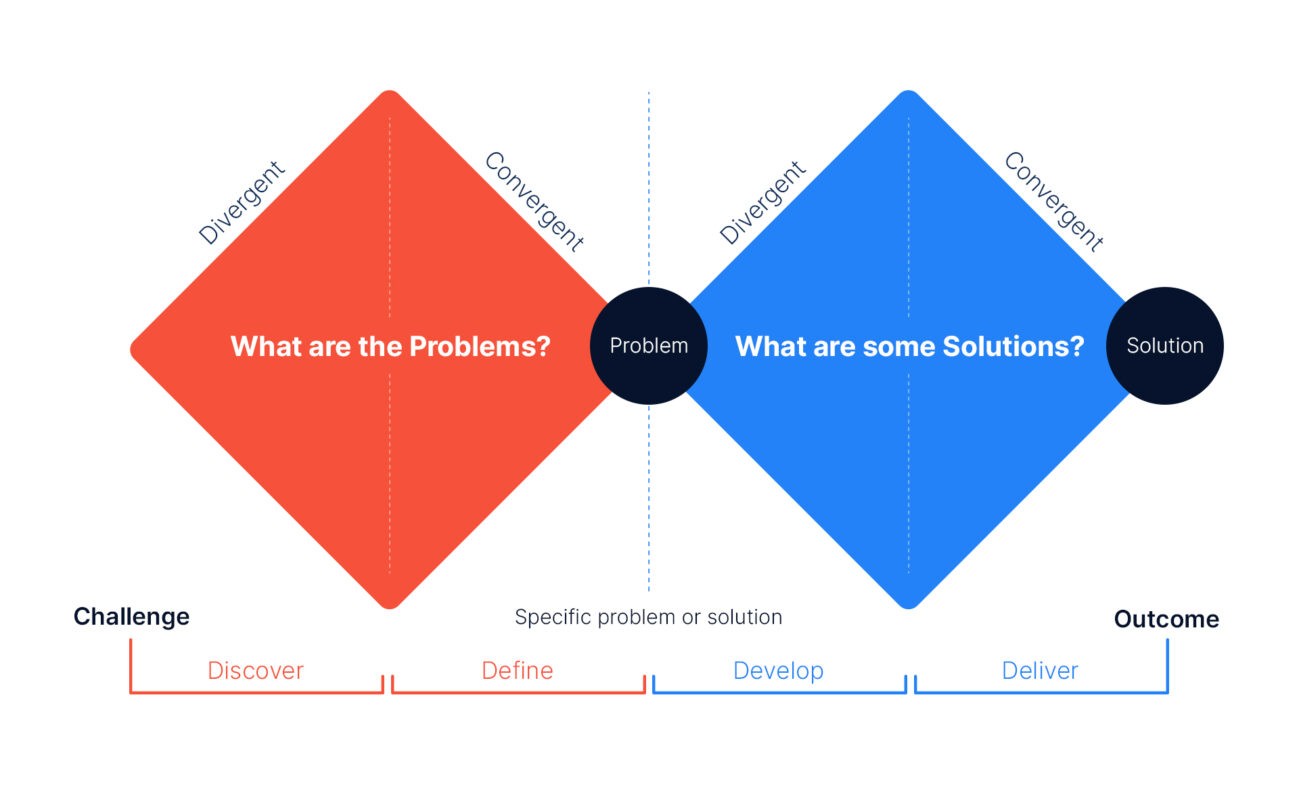
Origins of the Double Diamond Model
The Double Diamond model was created by the British Design Council in the early 2000s. It was designed to break down the design process into manageable stages by creating a framework that emphasizes empathy, analysis, synthesis, and implementation. The name 'Double Diamond' refers to the two stages of divergence and convergence that comprise the framework.
The Double Diamond model has its roots in the field of design thinking, which is a human-centered approach to problem-solving. The goal of design thinking is to create solutions that are not only functional but also meet the needs and desires of the people who will use them. The Double Diamond model takes this approach and applies it specifically to product design.
Design thinking has become increasingly popular in recent years, as more and more companies realize the importance of creating products and services that truly meet the needs of their customers. By using a human-centered approach to product design, companies can create products that are not only more successful but also have a positive impact on the lives of their users.
Key Principles of the Double Diamond Model
One of the primary principles of Double Diamond is that it involves a lot of divergent thinking. By encouraging multiple ideas and potential solutions, the process allows for great flexibility and creativity. This is important because it allows designers to explore a wide range of possibilities before narrowing down to the best solution.
The model also emphasizes the importance of research and user feedback to drive decision-making. This means that designers must spend time understanding the needs and desires of their users before making any design decisions. By doing so, they can create products that truly meet the needs of their customers and are more likely to be successful in the marketplace.
Another key principle of the Double Diamond model is that it is an iterative process. This means that designers must be willing to go back and make changes to their designs based on feedback from users and other stakeholders. By doing so, they can create products that are constantly improving and evolving over time.
Finally, the Double Diamond model emphasizes the importance of collaboration and teamwork. By bringing together people from different backgrounds and areas of expertise, designers can create products that are more innovative and successful. This is because each person brings a unique perspective and set of skills to the design process, which can lead to more creative and effective solutions.
The Four Phases of the Double Diamond Model
The Double Diamond Model is a product design process that helps teams to identify and solve complex problems. It consists of four phases, each of which is important to the success of the project.
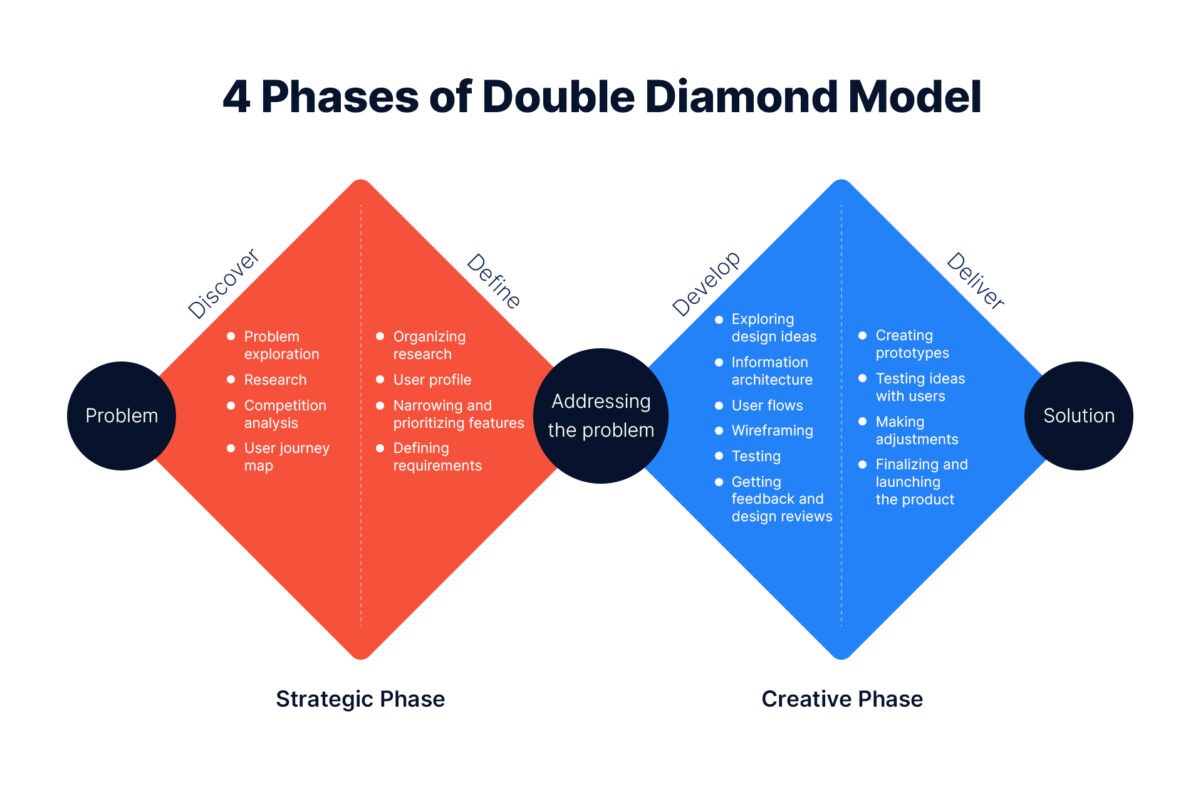
Phase 1: Discover
The first phase of the Double Diamond Model is the Discover phase. This is where the team begins by gathering information about the problem they are trying to solve. They conduct research, talk to stakeholders, and gather data to help them understand the problem and its context.
During this phase, it is important for the team to keep an open mind and consider a wide range of possibilities. They should also look for patterns and connections that can help them to identify the root causes of the problem.
Phase 2: Define
The second phase of the Double Diamond Model is the Define phase. This is where the team takes the insights they gathered during the Discover phase and uses them to define the problem they are trying to solve.
During this phase, the team should focus on creating a clear problem statement that reflects the needs of the users. They should also identify any constraints or limitations that may impact the design process.
Phase 3: Develop
The third phase of the Double Diamond Model is the Develop phase. This is where the team begins to generate ideas and possible solutions to the problem they defined in the previous phase.
During this phase, the team should use brainstorming techniques to generate a wide range of ideas. They should also consider different perspectives and approaches to the problem.
Phase 4: Deliver
The final phase of the Double Diamond Model is the Deliver phase. This is where the team takes the best ideas generated during the Develop phase and turns them into a tangible product or solution.
During this phase, the team should create prototypes, test their ideas with users, and refine their designs based on feedback. They should also consider the feasibility and viability of their solutions, and make any necessary adjustments before delivering the final product.
Overall, the Double Diamond Model is an effective process for product design that helps teams to identify and solve complex problems. By following the four phases of the model, teams can create innovative solutions that meet the needs of their users.
Phase 1: Discover
The Discover phase is the first step in the product development process. It involves identifying the problem that the product aims to solve and conducting research to understand user needs, behaviors, and preferences. This stage is key to ensuring that the product meets the needs of its intended audience.
Identifying the Problem
The first step in the Discover phase is to identify the problem that the product aims to solve. This can involve conducting market research, analyzing trends, and evaluating competitors to determine where opportunities exist. By understanding the problem that the product addresses, designers can create a solution that meets the needs of users and stands out in the market.
For example, a company that creates meal delivery services may identify the problem of busy individuals who struggle to find time to cook healthy meals at home. By addressing this problem, the company can create a product that saves time and promotes healthy eating habits.
Conducting User Research
During user research, designers gather qualitative and quantitative data to learn more about the needs, behaviors, and preferences of users. This includes conducting surveys, interviews, and observation of user behavior. By understanding the needs and preferences of users, designers can create a product that meets their specific needs.
For example, a company that creates fitness apps may conduct user research to understand the types of workouts that users prefer, the times of day they are most likely to exercise, and the features that motivate them to stay active. This information can be used to create a product that is tailored to the needs of its users.
Analyzing Market Trends
In this stage, designers analyze market trends to understand potential opportunities, possible challenges, and any unmet needs or pain points that users face. This information is used to validate the problem statement and refine the product's goals and objectives.
For example, a company that creates pet products may analyze market trends to identify a need for eco-friendly pet products. By understanding this trend, the company can create a product that meets the needs of environmentally conscious pet owners.
The Discover phase is a crucial step in the product development process. By identifying the problem, conducting user research, and analyzing market trends, designers can create a product that meets the needs of its intended audience and stands out in the market.
Phase 2: Define
Phase 2 of the design process is all about defining the problem that needs to be solved. This is a crucial step in the process, as it sets the foundation for the rest of the development process. In this phase, designers take the research gathered in the previous phase and use it to create a clear and concise problem statement for the project.
Synthesizing Research Findings
Before designers can define the problem, they need to gather enough information to fully understand the issue at hand. This can involve conducting user interviews, analyzing data, and researching industry trends. Once enough information has been gathered, designers can begin to synthesize the research findings.
Synthesizing research findings involves taking all of the information gathered and analyzing it to identify patterns and trends. This helps designers to gain a deeper understanding of the problem and the needs of the users. By synthesizing the research findings, designers can create a clear and concise problem statement that guides the rest of the development process.
Establishing Design Criteria
Once the problem has been defined, designers need to establish a set of design criteria. These criteria describe what the product must be able to do to meet the user's requirements. This can include functionality, usability, and other technical criteria that support the product's features.
Establishing design criteria is an important step in the process, as it ensures that the product meets the needs of the users. By setting clear criteria, designers can ensure that the product is functional and easy to use.
Creating User Personas
User personas are an important tool in the design process. They are created to describe different types of users who might interact with the product. This allows designers to create a custom product that meets the needs of specific user types, rather than trying to create a one-size-fits-all solution.
Creating user personas involves conducting research to identify the different types of users who might interact with the product. This can involve conducting user interviews, analyzing data, and researching industry trends. Once the different user types have been identified, designers can create personas that describe their needs, goals, and behaviors.
By creating user personas, designers can ensure that the product is tailored to the needs of the users. This can help to improve user satisfaction and make the product more successful in the market.
Phase 3: Develop
During the development phase, designers and developers work together to bring the product to life. This phase is crucial as it involves turning the ideas and concepts from the previous phases into a functional product that meets the needs of the users and the business.
Ideation and Brainstorming Techniques
One of the key aspects of the development phase is ideation and brainstorming. This involves coming up with innovative solutions to the problem while balancing user needs, business goals, and design criteria. Designers use various techniques such as brainstorming, mind mapping, and sketching to generate ideas and explore multiple alternatives and approaches.
During this phase, designers emphasize divergent thinking, which is the process of generating multiple ideas and solutions. This allows designers to explore a wide range of possibilities before narrowing down to the best solution.
Prototyping and Iterating
Once multiple solutions are identified, designers create prototypes of each design to determine which will work best. Prototyping is an essential part of the development phase as it allows designers to test and refine their ideas in a low-risk environment.
Designers create different types of prototypes, such as low-fidelity and high-fidelity prototypes, to test different aspects of the design. These prototypes are then tested and refined as needed until a high functioning prototype is created.
Evaluating and Refining Concepts
During this stage, the products are evaluated for usability and feasibility. They are tested and evaluated by real users, based on well-designed and targeted UX research. This is done to ensure that the product meets the needs of the users and is easy to use.
In addition, the project team looks for opportunities to refine the product during this phase, improving its usability, functionality, and overall user experience. This involves iterating on the design, making changes based on user feedback, and testing the product again to ensure that the changes have had the desired effect.
The development phase is a complex and iterative process that requires close collaboration between designers, developers, and other stakeholders. By using ideation and brainstorming techniques, prototyping, and evaluating and refining concepts, designers can create a product that meets the needs of the users and the business.
Phase 4: Deliver
Finalizing the Product Design
The final design of the product is created based on the design criteria, feedback from users, and usability testing results. It is refined until it is ready for launch.
Testing and Validation
The final product is tested and validated to ensure that it meets the requirements established in the design criteria. This involves testing its features and functions to ensure that they function correctly and are effective. The product is also tested to ensure it is secure and that all regulations are followed.
Launching the Product
Once the product has been thoroughly tested and refined, it is launched for public use. Users can experience all the research, testing, and design in a high-quality product designed to meet their needs.
Benefits of the Double Diamond Process
Enhanced Collaboration and Communication
By involving multiple parties, the Double Diamond process ensures that everyone has an opportunity to contribute and grow ideas collectively. This reduces communication bottlenecks and accelerates decision-making significantly.
Improved Decision-Making
The iterative and data-driven process increases the accuracy of decision-making, resulting in products that truly meet user needs. This results in products that are aligned with user needs and that create business value in the most effective way.
Increased Innovation and Creativity
By building in divergent thinking during the early stages of the process, Double Diamond creates avenues for innovation and creativity. This enables the creation of products that are unique and differentiate themselves from competitors.
Case Studies and Success Stories
Example 1: Huobi Mobile Trading Platform
Our experience has shown that implementing the Double Diamond model in digital products as advanced as mobile trading platforms can be challenging but effective. Artkai followed the Double Diamond method for Huobi mobile trading platform, successfully creating a product that stands out from those of competitors and satisfied users' needs.
Our experts studied the European market and derived valuable insights on UX improvements. We created a design system and implemented the following features: an intuitive interface, user control, quick access, and secure storage. We also delivered a marketing website.
As a result, Huobi gained:
- $1,2 trillion of accumulative turnover
- 50% of global share digital asset
- Numerous new users in 130 countries
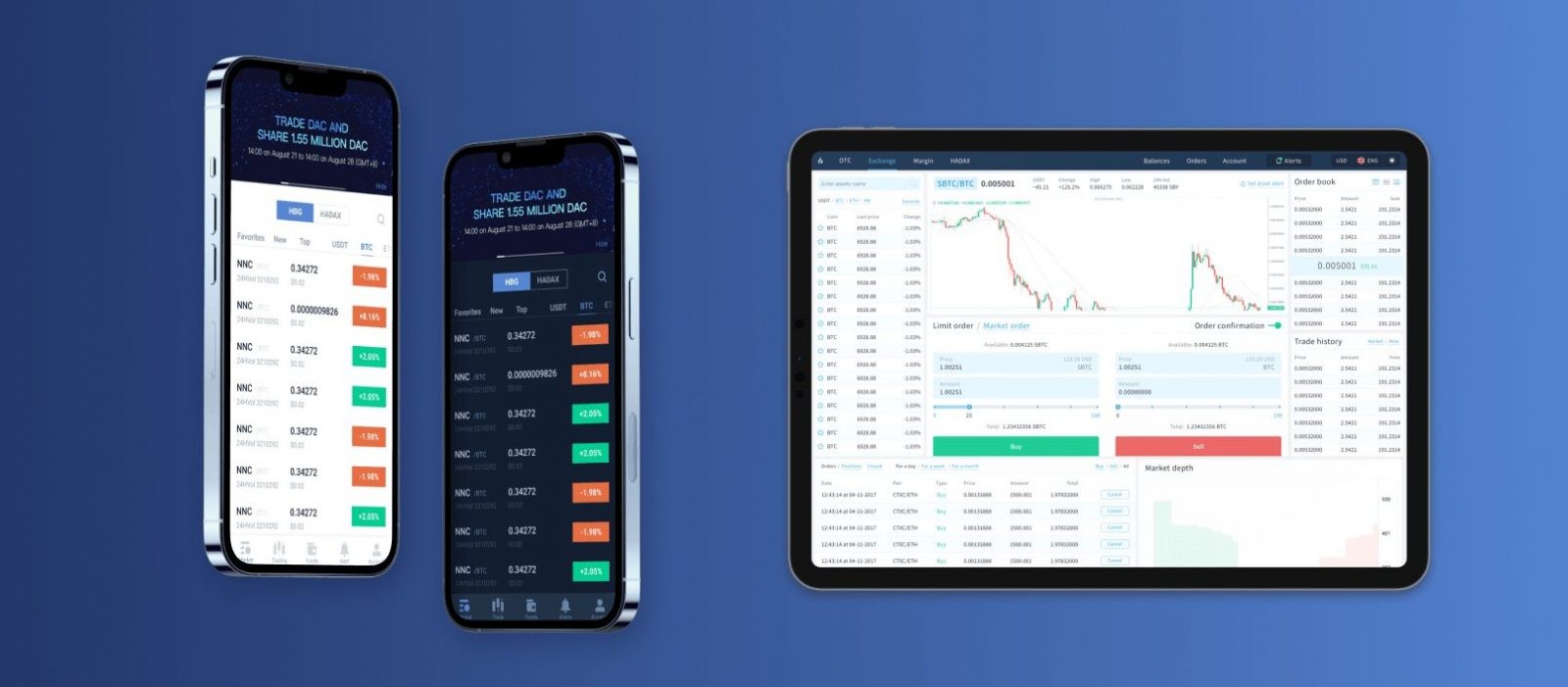
Example 2: CoinLoan Web-based P2P Lending Platform
Applying the Double Diamond process to CoinLoan - P2P lending web platform allowed Artkai to create a solution that fulfills users' need for secure and transparent transactions while outdoing competitors' product offerings and increasing platform usage.
Our team improved the platform’s simplicity and usability. With the omnichannel experience in mind, Artkai created a customer journey map that considers interactions on the web, mobile, in-person branches, and marketing. With Artkai’s collaborative efforts, the client received:
- An attractive, helpful, and informative website.
- A comprehensive, secure, and straightforward platform.
- Effortless and beneficial experience.
- More than 100,000 active users on the platform.
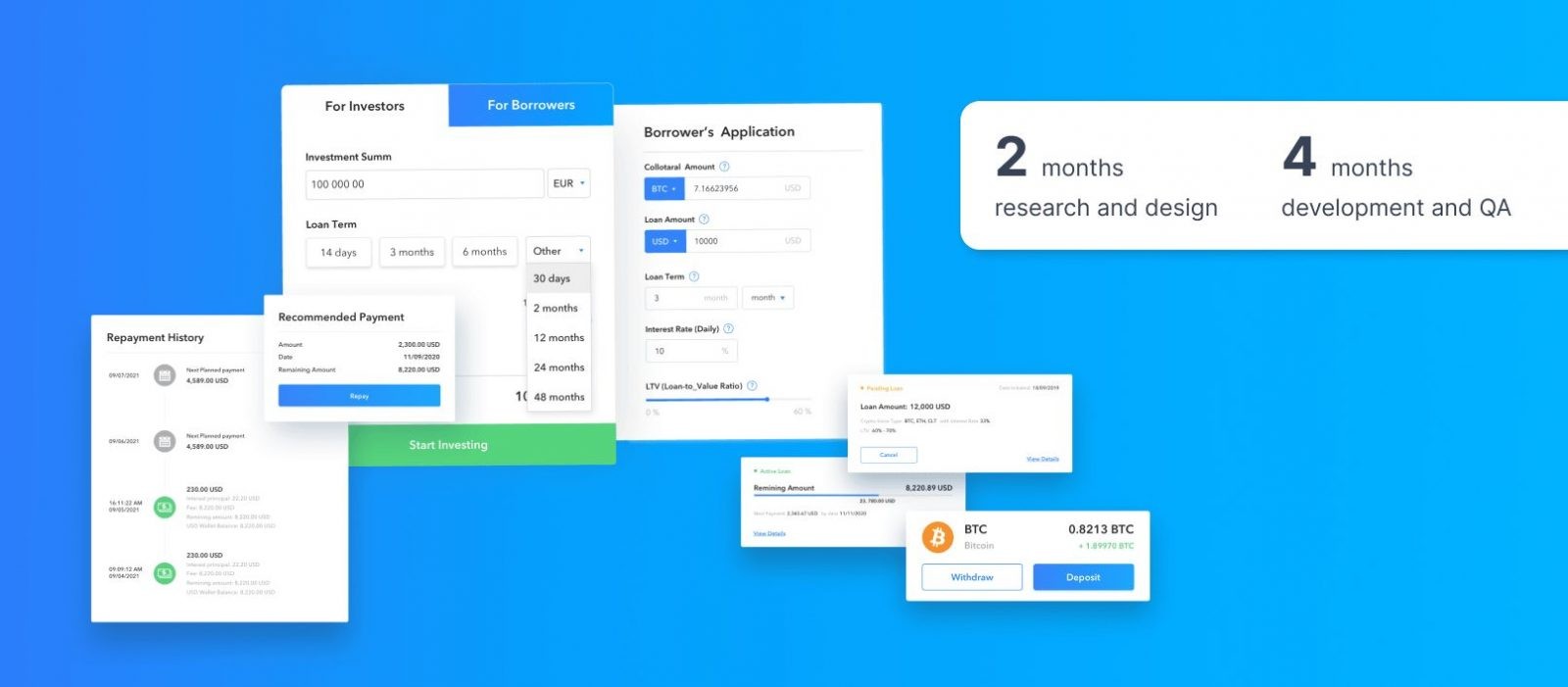
Example 3: NDA Booking - All-in-one solution for the travel industry
Creating an all-in-one solution for the travel industry that meets the diverse needs of different parties involved requires knowledge of the business, technology, and user behavior. By applying the Double Diamond method to NDA Booking, Artkai made a product that streamlines travel management, booking, and finance.
Overall, the platform has transformed how B2B providers in the travel and leisure industry operate, simplifying their operations and helping them maximize their profits.
Following a year of collaboration and development, the platform has seen a remarkable response, with over 200 B2B providers signing up and over 10,000 bookings facilitated since launch. Notably, our clients have experienced a staggering 30% increase in revenue since incorporating the platform into their operations, a testament to its success in driving business growth.
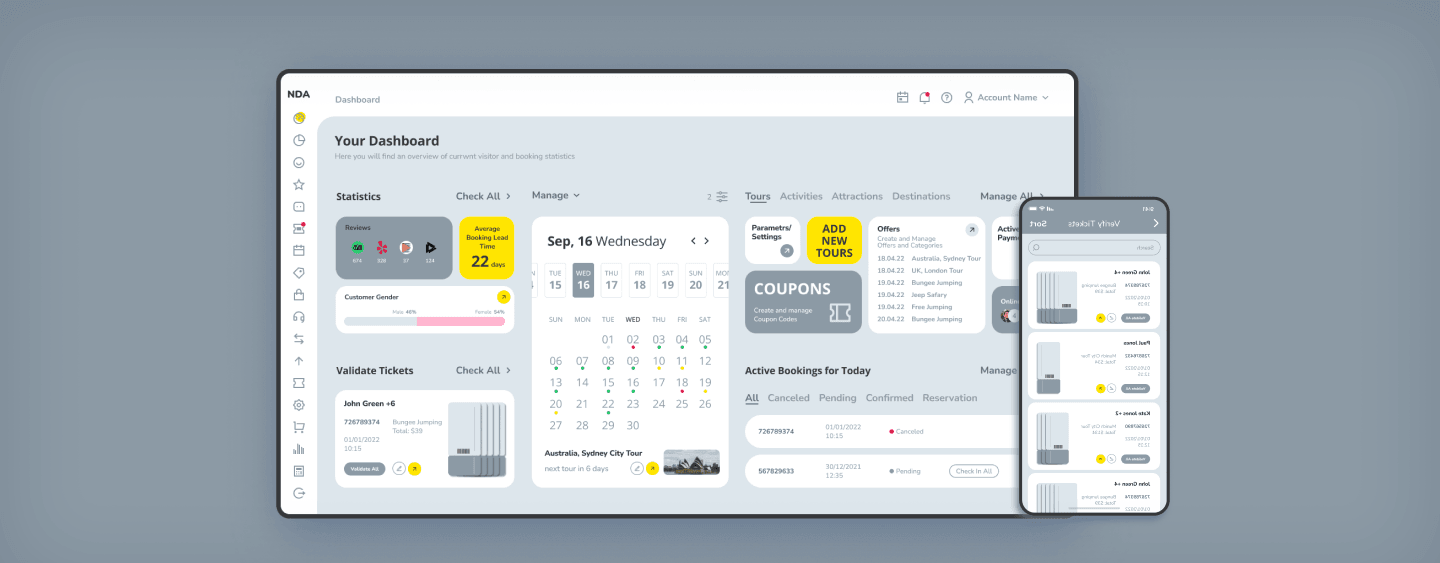
Implementing the Double Diamond Process in Your Organization
Implementing the Double Diamond Product Design Process can transform your product development approach, making it more focused, iterative, and user-centered. Here are some tips to adapt the model to your organization:
Adapting the Model to Your Needs
It’s essential to tailor the process to your organization's unique needs and culture. The framework can be adapted to fit any project's requirements to a tee, resulting in a more efficient design and development process.
Overcoming Common Challenges
Designing digital products can be complex and challenging, but the Double Diamond model can help you overcome those challenges, which is why it’s necessary to experiment with technology and design options to find the optimal strategy for your team.
Measuring the Impact of the Double Diamond Process
It’s crucial to measure your product development impact to ensure successful product deliveries in the future. KPIs such as product usage rate, customer satisfaction, retention rate, and overall revenue impact can help determine which areas of the process need to be refined in the future.
Conclusion
At Artkai, we know that the Double Diamond Product Design Process is a valuable tool for businesses that want to create digital products that users enjoy and that improve their business. By following the process, we’ve achieved great success, as shown by our case studies for Huobi, CoinLoan and NDA Booking. If you'd like to improve your product's design process using Double Diamond, contact us for expert guidance and support.
Clients and Results
Schedule your free consultation
Don't miss this opportunity to explore the best path for your product. We are ready to delve into the specifics of your project, providing you with expert insights and optimal solutions.
Book your free sessionRead More
Explore articles from Artkai - we have lots of stories to tell
Join us to do the best work of your life
Together we advance the human experience through design.